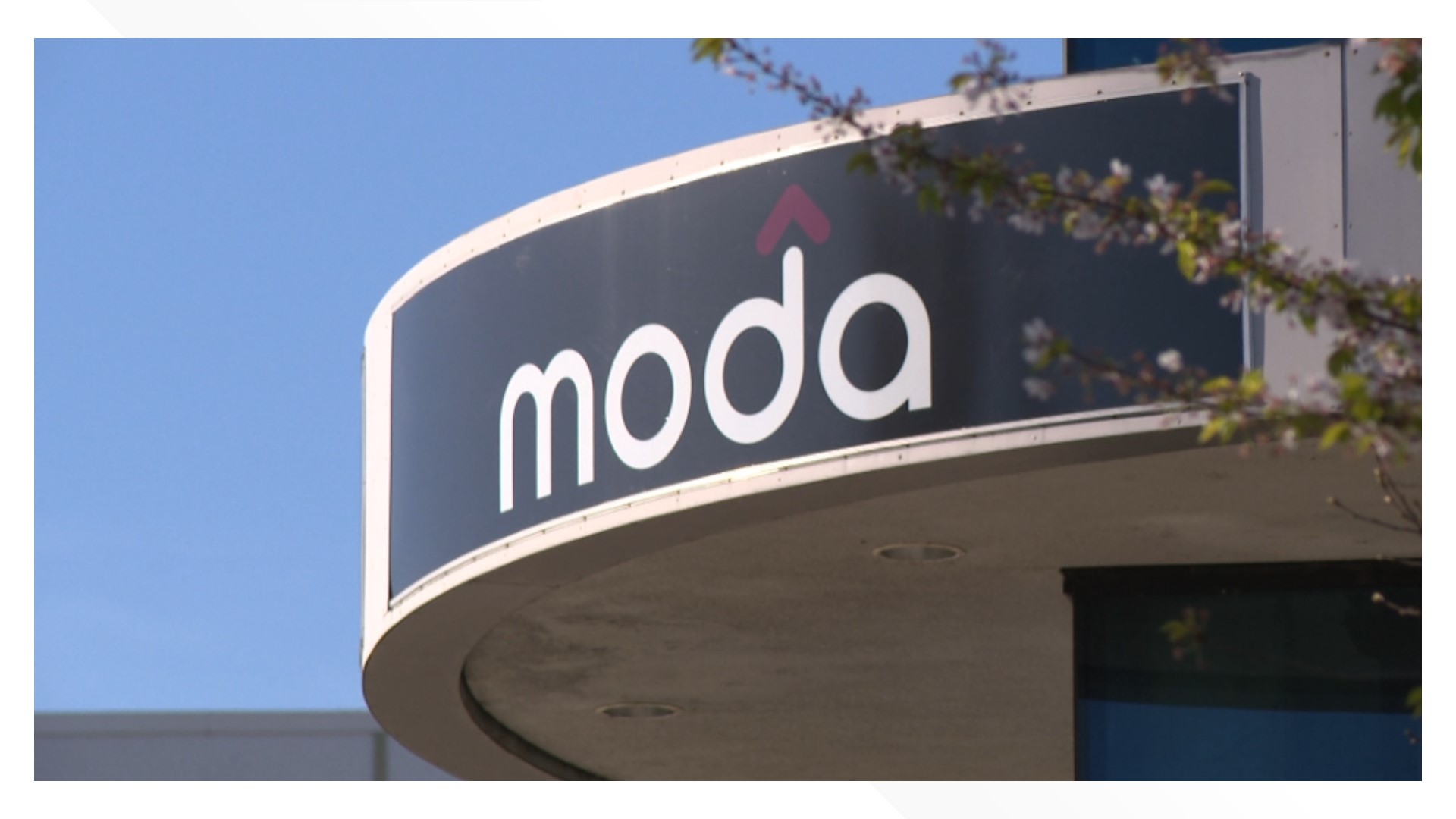PORTLAND, Ore. — The NCAA said one of the 3-point lines at the Moda Center in Portland was about 9 inches short of regulation during the NCAA Women's Basketball Tournament games this weekend.
The mistake was made by a contractor that makes the courts used throughout March Madness, the NCAA said.
The line has been corrected. UConn and USC will play the final Elite Eight game of the tournament Monday night on that court.
The court screw-up was recognized before Sunday's Elite Eight matchup between the University of Texas and North Carolina State.
Officials were seen before the game measuring from the baseline to the top of the three-point line on each half of the court, realizing the disparity. Four games already had been been played over two days with the mismatched 3-point lines.
"I walked in and there was measuring happening and I was sitting next to a friend who was like, 'Are they measuring the 3-point line?'" said Courtney Cox, a Texas women's basketball fan and University of Oregon assistant professor who attended the game. "I was here Friday and Saturday as well, so I was like, 'Has it moved since we slept?'"
The NCAA uses Connor Sports to supply and install the courts. The NCAA said the marking used to draw the line at the top of the arc in the center of the court was marked too short.
“For all NCAA courts, a small hole is punched in the floor at each end of the court that indicates ‘center-of-basket’ during the finishing process. A calibrated vinyl-tape device is then placed in the hole, which lays the 2-inch game line to be painted," Lynn Holzman, NCAA vice president for women’s basketball, said in an email update that went out to members.
After reviewing the Portland court, it was found that the center hole was punched about 9 inches short of where it needed to be at the apex of the 3-point arc.
“Connor Sports and the NCAA found the inaccurate line was the result of human error by the finisher contracted by Connor Sports,” Holzman said. “The review also found the sides of the 3-point line were accurately painted, as were all other court markings.”
Before the game, both Texas Coach Vic Schaefer and NC State Coach Wes Moore agreed to go ahead and play the game despite knowing about the problem.
Schaefer said he didn't want to delay the game, didn't want to throw off his team, and didn't want to lose the network TV slot on ABC — all of which were possibilities if the teams had agreed to wait for someone to come fix the court.
“I hate to say this, but I have a lot of colleagues that would say — only in women's basketball," Schaefer said after the game. "I mean, it's a shame, really, that it even happened, but it is what it is."
He said no one wanted to draw extra attention to the issue by delaying the game.
"You want to know if I think (the three-point lines) had anything to do with the [outcome of] the game? Probably not," Schaefer said. "But I really would have loved to have done what I normally do my last 12 minutes before a game instead of walking around out there trying to see if the floor's screwed up."
NC State, which beat Texas 76-66 behind guard Aziaha James' 27-point performance, seemed relatively un-phased by the three-point line controversy after the game when asked if it would have mattered considering how well the team was shooting.
"Not at all," James responded.
"They don't shoot at that thing anyway, so it don't matter," joked Moore, saying his players often take deep threes.
Moore later added that he didn't believe the three-point line differences were a major factor either way since both teams played a half on each end.
"I was (more) worried about if our players were going to have to wait an hour to play, I like the fact we could jump out there and play the game," Moore said.
The NCAA 3-point line is at 22 feet, 1 3/4 inches for both women and men.
“We apologize for this error and the length of time for which it went unnoticed,” Holzman said. "Simply put, this court did not meet our expectations, and the NCAA should have caught the error sooner.
"We will work with all of the NCAA’s suppliers and vendors to establish additional quality control measures to ensure this does not happen in future tournaments."
Cox, who said she's currently finishing a book on women's basketball around the world while studying identity, technology and labor through sports media, said there were plenty of fans with questions.
"We have this moment where the athleticism (for women's sports) is in a place where it’s better than it’s ever been, there's more focus and more media coverage, things that these players deserve, and then we have these little moments that kind of remind us of the work that’s still there for us," Cox said.
Cox said she's most curious about how the players feel about the mess-up.
"I’m interested from them, do they feel it was off — or the mental component, once you know it’s not right, is that throwing you off," she said.
A significant error like this one, Cox said, brings natural questions of accountability and equity for the NCAA and the men’s and women’s tournaments.
"The fans are there, the athletes are there, the sport is there, we really just need everyone else to catch up...I mean especially the three-point line, right?"
Portland will host the NCAA Women's Final Four in 2030.

